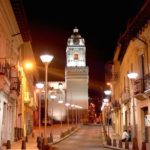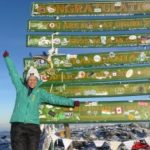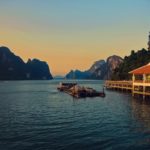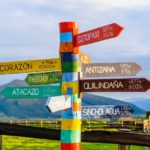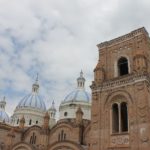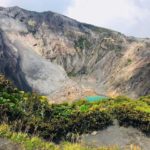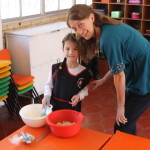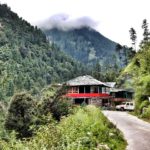Hiking at the Cotopaxi National Park: The Greatest Challenge of All
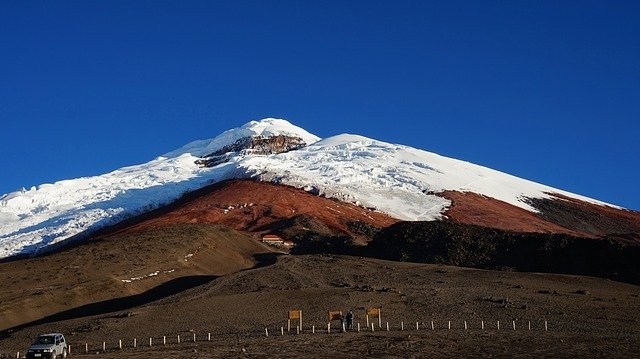
In 2008, I taught English in Ecuador for seven months at Centro de Educacion in Quito, Ecuador. The Centro de Educacion is considered the largest language university in South America. Living in Ecuador presented a very different challenge than anything I had experienced previously. I had never lived in another country before. I embraced this new opportunity with eager anticipation but also some trepidation and anxiety.
Before, I considered myself bold for attending college out of state and studying in Washington, DC for a semester. I also had been out of the country without my parents when I studied abroad in college for three weeks in Eastern Europe.
Cotopaxi symbolized my entire experience in Ecuador. It tested me. I fought altitude sickness and the elements. However this beautiful country also mesmerized me. It really gave me a chance to do something on my own.
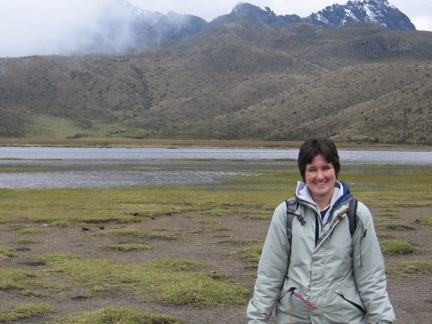
Cotopaxi seemed more like a myth and a legend. I subsequently learned that Cotopaxi lived up to its reputation.
In mid-March of 2008, a friend and I began our journey to Latachunga. We planned to spend the night there before we hiked part of Cotopaxi. We did not adequately comprehend the challenge awaiting us. The stories I heard about Cotopaxi bemused me. Cotopaxi seemed more like a myth and a legend. I subsequently learned that Cotopaxi lived up to its reputation.
Cotopaxi National Park is about one hundred miles south of Quito. Located in the Cotopaxi, Napo and Pinchicha Provinces, two doormat volcanoes lie along its northwest and southeast borders. Additionally Cotopaxi has the highest, most active volcano in the world. When we arrived at Cotopaxi, I keenly felt as though we were standing on a power keg.
There is a strange peacefulness within the national park. Along the glistening mountaintops, wildflowers dot the landscape. Moose, deer, elk, caribou and llamas call the park home. The guide stopped the car so we could take pictures. Occasionally, the llamas stood perfectly still. I remember drawing in my breath to stare at the deep cerulean blue sky above us. It was a marked contrast to the grey, polluted Quito skies. As we drove further, the dirt road gave way to mud and snow.
Before I prided myself on my hiking ability. My parents took me on hikes even before I could walk. We hiked in Yellowstone and the Grand Tetons National Park. I also completed challenging hikes in Banff National Park in Canada. The Cotopaxi hike was a new challenge. I found myself completely daunted and overwhelmed. There were times when I wanted to give up and surrender to some force I did not understand. Yet Cotopaxi also beckoned me on. It had a strange mysticism.
I fought homesickness, culture shock, anxiety about teaching and altitude sickness. I came to terms with it all. I adapted on my own and in my own way.
The longer we hiked in Cotopaxi, the closer we came to reaching the refuge or midway point. Unfortunately, as we hiked to the summit, the air grew increasingly thin. I consider myself in very good shape. I am a runner and a soccer player. However with every step, I found myself gasping for breath. The thinning air was not the only challenge we confronted.
Unlike on other hikes, there was no discernible trail. We were largely responsible for creating our own trail. There was no set path or direction. We were required to chart our own course. This also symbolized my experience in Ecuador.
During my time in Ecuador I struggled to adapt to the new and very different culture. I did not speak the language naturally. I was far from everything and everybody familiar to me. I fought homesickness, culture shock, anxiety about teaching and altitude sickness. I came to terms with it all. I adapted on my own and in my own way.
In Cotopaxi we often hiked waist high in mud and snow. Sometimes we crawled on our hands and knees through a difficult portion of the unforgiving terrain. There were times I thought for sure I was crazy. I felt tempted to turn back. I felt a sickly familiar dizziness and nausea take hold of me. I knew I had altitude sickness. Still something spurred me on.
In Cotopaxi we often hiked waist high in mud and snow. Sometimes we crawled on our hands and knees through a difficult portion of the unforgiving terrain.
When we reached the refuge, I welcomed the opportunity to sit down. A cup of hot chocolate quickly revived my sagging blood sugar. I began to feel more like myself. My clothing weighed me down. It was soiled and soaking wet. I was sun and wind burnt. Still the views were so incredible. We saw the jagged mountain peaks. We also saw the amazing glacial structures that dotted those mountain peaks.
Cotopaxi should be considered a must-see for anyone who travels to Ecuador. It is majestic, imposing and overwhelming. You will be challenged in every way one can be challenged. You must accept the physical daunting challenge. You can protect yourself against altitude sickness by staying hydrated and keeping high protein foods on hand. It is important to bring lots of layers so you can change. The layers should be lightweight but well insulated so they can keep you warm. You do not want anything that will only add extra weight to you when it’s soiled or wet. It is recommended to go with as guide.
The most important thing about Cotopaxi is not to give up. The views and experiences are worth it. It is an opportunity to do something on your own. Challenge yourself and accept the fact that you will get knocked down. The most important thing is to keep getting up.
Hiking at the Cotopaxi National Park: The Greatest Challenge of All photos by Pixabay and Emily Anderson.

